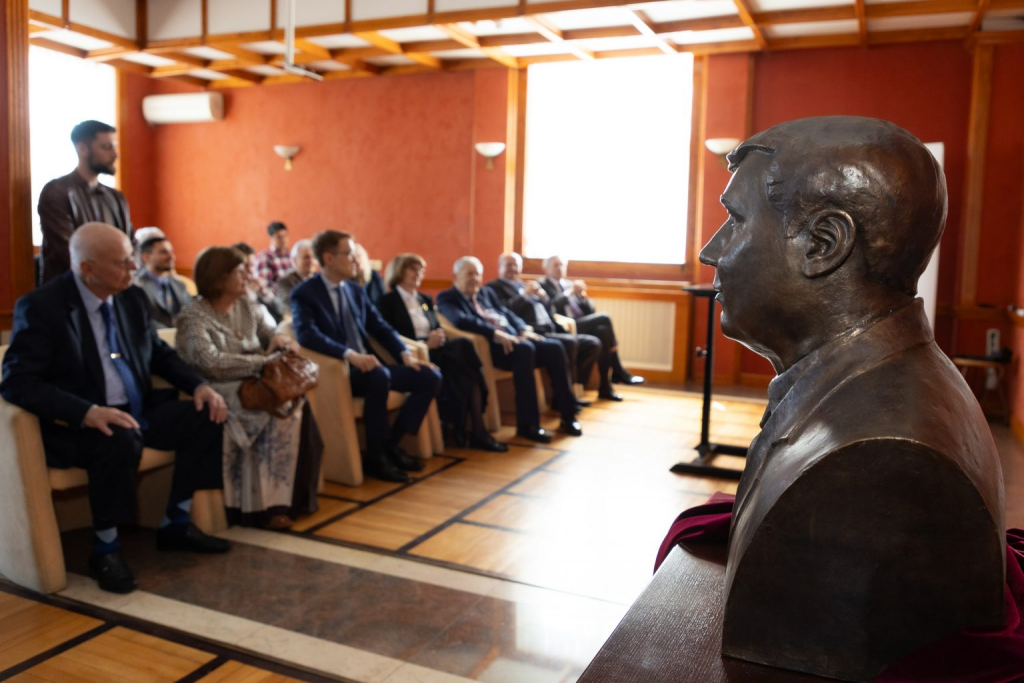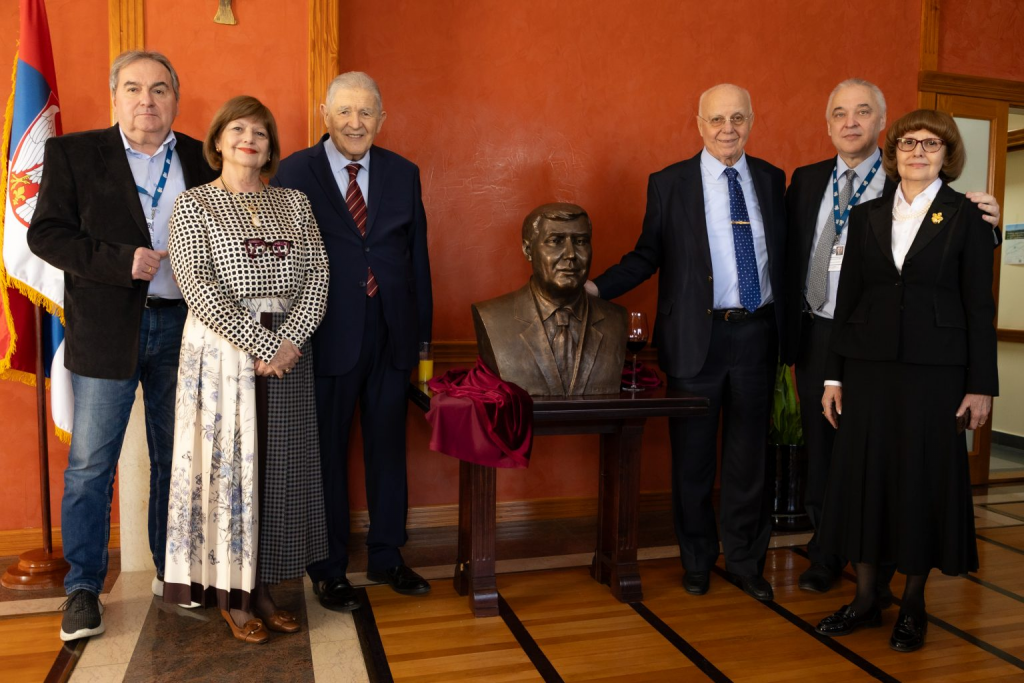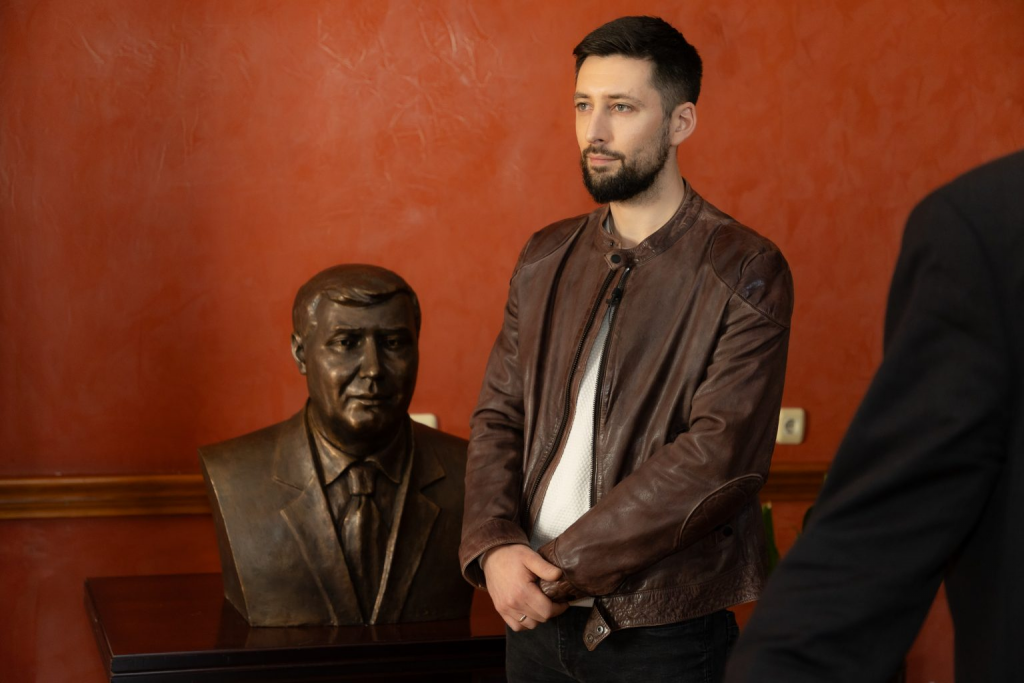
On Friday, 21 March, colleagues, friends, and family of Dr Dragan Popović (1949-2015) gathered in the Hall bearing his name at the Institute of Physics Belgrade. He was a physicist who, during his career, made a profound and lasting contribution to the development of the Institute and the promotion of physical sciences in Serbia.
The memorial event was convened to mark the tenth anniversary of Dr Dragan Popović’s passing and to unveil his bust, a work by sculptor Rade Mutapović. Through this event, the Institute of Physics Belgrade, the national institute of the Republic of Serbia, honoured ‘the greatest of its directors’ as he was described during the ceremony.

‘Ten years down the road, we can say that we have remained on the path he envisioned,’ said Dr Aleksandar Bogojević, the Institute’s director, in his opening remarks. Reflecting on Dr Popović’s legacy, he emphasised that it had been his dream to build a world-class research institution marked by strong international cooperation.
He noted that the Institute had continued to strengthen its collaboration with international colleagues and institutions, while also actively encouraging the return of researchers from the Serbian diaspora. In addition, the Institute has enhanced its media presence, broadened multidisciplinary engagement at all levels, and fostered a creative research environment—’ in the process of moulding an institution,’ as Dr Bogojević remarked.

On behalf of Dr Dragan Popović’s family, his son, Igor, addressed the audience, thanking the Institute for organizing the memorial event and unveiling the bust. He announced that this year would see the establishment of a science award bearing the name of Dr Dragan Popović.

‘We would like to formalize the continuous cooperation with the Institute of Physics and support its work because the Institute has been fulfilling my father’s vision’, said Igor Popović.
Dr Dragan Popović was at the helm of the Institute during trial years, from the early 1990s until the end of the first decade of the 21st century. During these challenging times, not only did he manage to safeguard the institution, but he also laid the groundwork for its recognition on the European and global scientific stage.

Born in Belgrade in 1949, Dr Popović received his education in Paris in Lycee Janson de Sailly followed by his graduation Summa Cum Laude in physics in Belgrade. He earned his doctoral degree at Hiroshima University, Japan, with a dissertation in field theory. He remained deeply connected to Japan throughout his life, founding the Serbian-Japan Society in 1992 and serving as its first president. In 2005, he initiated an agreement on cooperation between Hiroshima University and the University of Belgrade. Between 1975 and 1977, Dr Popović worked at Hiroshima University, collaborating with Hiraku Nakajima, Makoto Kobayashi and Toshihide Maskawa, who would later be honoured with the Nobel Prize in physics in 2008. He visited Japan several more times, establishing cooperation with the Yukawa Institute for Theoretical Physics and the Department of Physics of Kyoto University.

With his group from the High Energy Physics Laboratory, he joined the ATLAS experiment at CERN, Geneva. This group contributed to the construction of the ATLAS detector, one of the four present on the Large Hadron Collider.
Dr Popović dedicated the majority of his career to running the Institute. As its director, he was dedicated to the improvement of working conditions despite difficult societal circumstances and war. He successfully resolved complex legal and financial issues concerning the Institute’s premises in Pregrevica, Zemun—its home since the early 1980s. During his mandate, he managed to renovate almost the entire facility and make it functional for the work of state-of-the-art laboratories.
Photos by: Bojan Džodan




